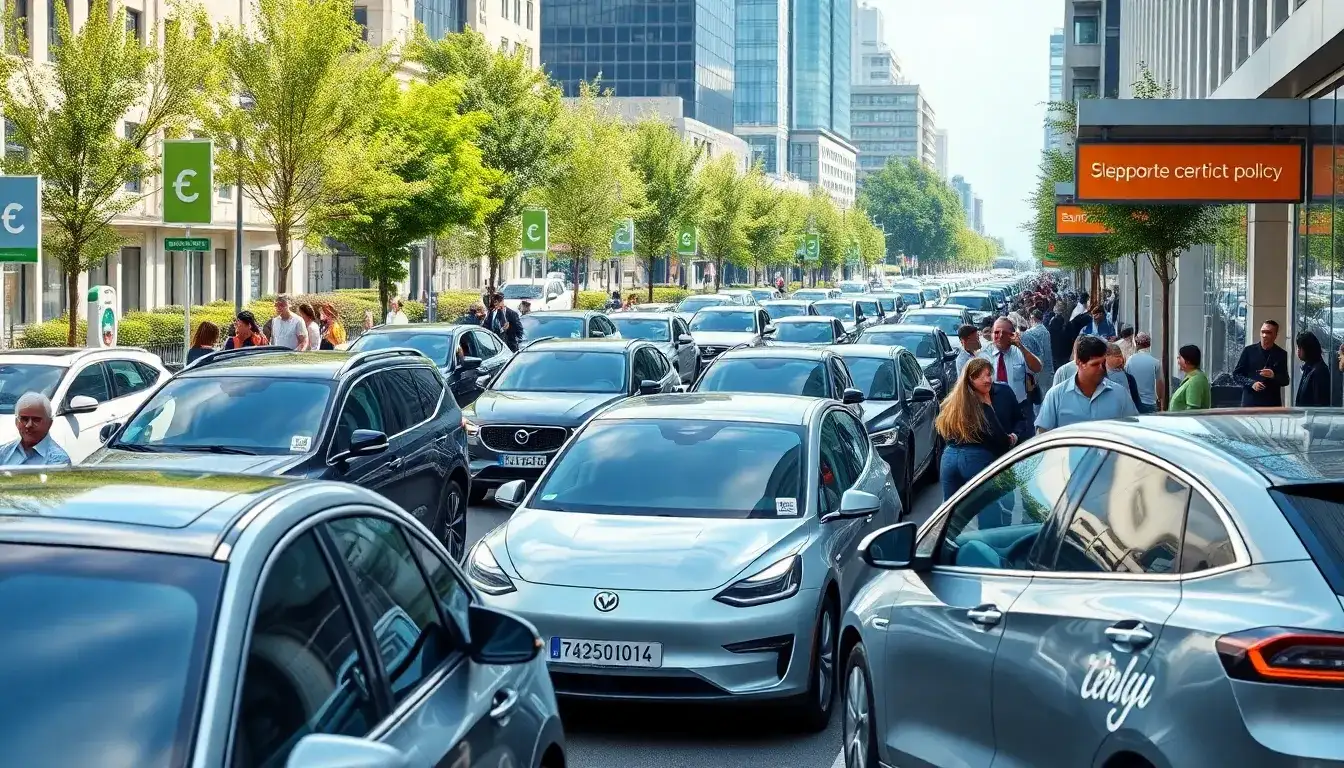
In March, the new energy vehicle (NEV) market experienced a surge in sales, driven by favorable policies. Several automakers reported significant year-over-year increases in delivery numbers, with brands such as BYD, Xpeng, and Leap Motor leading the way. The positive effects of government policies and vibrant market activity have created a strong synergy.
BYD continues to dominate the NEV market, achieving sales of 377,400 units in March, representing a year-on-year increase of 24.8%. Of these, 371,400 units were new energy passenger vehicles, marking a 23.1% growth. From January to March, BYD’s cumulative sales surpassed 980,000 units. In the international market, BYD sold 72,700 NEVs overseas in March.
Leap Motor reported a remarkable delivery of 37,100 units in March, a staggering growth of 154%, allowing it to surpass brands like Li Auto and Xpeng to secure a top position in NEV deliveries. Following closely, Xpeng experienced explosive growth with 33,200 deliveries in March, reflecting a 268% increase year-on-year. Xpeng has maintained a monthly delivery volume of over 30,000 units for five consecutive months.
Li Auto has also shown steady performance, delivering 36,700 vehicles in March, which is a year-on-year increase of 26.5%. For the first quarter of 2025, Li Auto’s total deliveries reached 92,900 units, up 15.5% from the previous year. Furthermore, brands like Xiaomi Auto and Zeekr have also shown impressive results. Xiaomi Auto delivered over 29,000 vehicles in March, marking six consecutive months of sales exceeding 20,000 units. Zeekr delivered 15,400 vehicles, a 18.5% year-on-year increase, with a month-on-month rise of 9.9%.
In March, NIO delivered 15,000 vehicles, a 26.7% increase year-on-year. Of these, the NIO brand accounted for 10,200 units, while the sub-brand Ladao contributed 4,820 units. As NIO’s second brand, Ladao faces significant sales pressure. In the first quarter of 2025, NIO’s total deliveries reached 42,000 vehicles, with the NIO brand delivering 27,300 units and Ladao delivering 14,800 units, trailing behind other new energy vehicle manufacturers.
Government policies have stimulated consumer demand. According to a recent report from the China Automobile Dealers Association released on March 31, the inventory alert index for automobile dealers in March was 54.6%, a decrease of 3.7% year-on-year and 2.3% month-on-month, indicating improved industry conditions. The Joint Conference of Passenger Car Market Information reported that from March 1 to 23, the national retail sales of passenger cars reached 1.154 million units, a growth of 25% compared to the same period last month; cumulative retail sales for the year totaled 4.33 million units, indicating a 5% increase.
The new energy vehicle market has particularly excelled, with retail sales of 622,000 NEVs from March 1 to 23, a remarkable 40% increase compared to the previous month. Year-to-date cumulative retail sales reached 2.048 million units, up 34% year-on-year. Recently, favorable policies in the automotive industry have continued to rise, further increasing consumer demand for vehicle purchases. Local governments are enhancing subsidies and incentive policies, vigorously supporting trade-ins for new vehicles by offering consumption vouchers and time-limited subsidies to provide consumers with more purchasing advantages.
According to the latest data from the Ministry of Commerce, as of March 28, applications for the 2025 vehicle trade-in subsidy have exceeded 1.769 million, while cumulative retail sales of new energy passenger vehicles nationwide have surpassed 2.05 million units, reflecting an approximately 34% year-on-year growth. A representative from the Ministry of Commerce stated at the 2025 China Electric Vehicle Hundred-Person Forum that the ministry will continue to implement and enhance trade-in subsidies for vehicles, increasing support for purchasing new energy vehicles, thereby unlocking consumer potential and focusing on resolving issues in the NEV circulation system.
The Joint Conference believes that with the gradual rollout of trade-in policies across various regions, the automotive market is entering a new phase of recovery after the holiday season. This year, the early release and rapid implementation of trade-in policies have injected strong momentum into the March vehicle market. The primary growth factors in March stem from policy-driven initiatives and the natural post-holiday market recovery.







